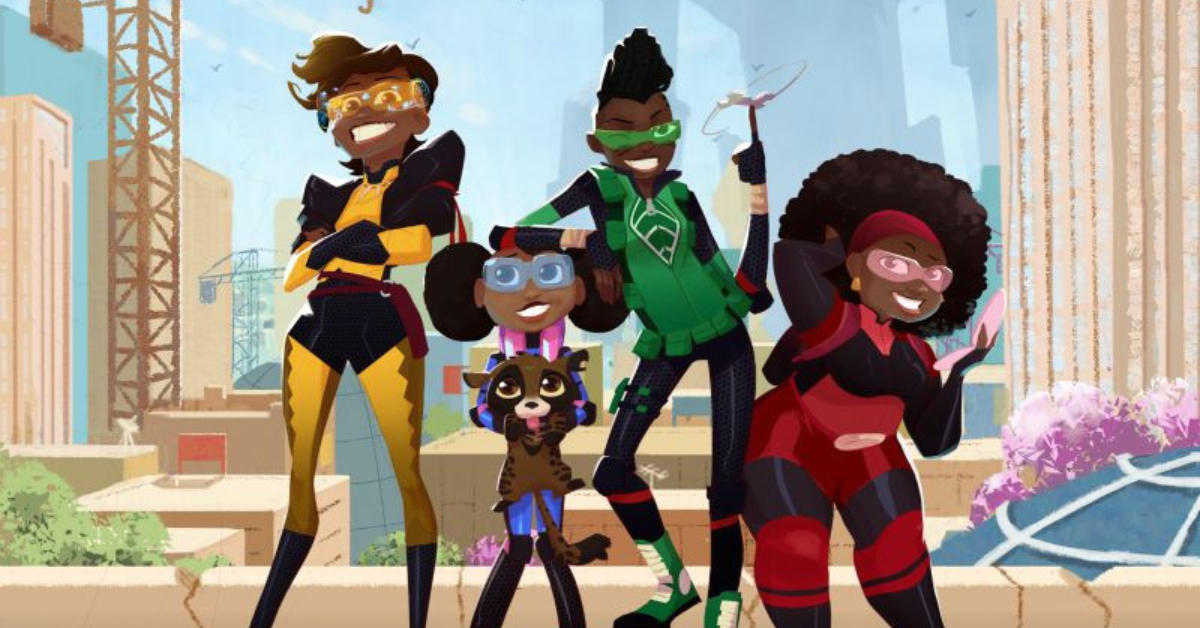The global animation industry has long been dominated by Western and Asian studios, but in recent years, a new and vibrant player has emerged on the scene: Africa.
African animation studios are not just participating in the industry; they are revolutionizing it. With unique storytelling perspectives, cultural richness, and innovative techniques, these studios are reshaping the global animation landscape. This article explores how African studios are revolutionizing the animation industry, highlighting the key players, challenges, successes, and prospects.
The Rise of African Animation Studios
Africa’s animation industry has seen exponential growth over the past decade. While the continent has a long history of storytelling through traditional media, the digital revolution has opened new avenues for animation. African studios are now producing world-class content that resonates globally yet remains authentically African.
One of the major catalysts for this growth has been the rise of affordable technology. The accessibility of high-powered computers and software has enabled animators to create high-quality work without the need for massive financial investment. Additionally, the proliferation of the internet has made it easier for African animators to showcase their work to a global audience.
Key Players in the African Animation Scene
Several studios across the continent are leading the charge in revolutionizing the animation industry. Here are a few of the key players:
- Triggerfish Animation Studios (South Africa):
Triggerfish is one of the most prominent animation studios in Africa. Based in Cape Town, South Africa, the studio has been instrumental in putting African animation on the global map. Triggerfish has produced several critically acclaimed films, including Adventures in Zambezia and Khumba, which have been distributed worldwide. The studio’s success has opened doors for other African animators to enter the global market.
- Kugali Media (Nigeria):
Kugali is one of Nigeria’s most prominent animation studios, known for its groundbreaking work in African storytelling. The studio made headlines with its collaboration with Disney on the animated series Iwaju, which explores themes of inequality and innovation in a futuristic Lagos. Kugali is celebrated for its commitment to authentic African narratives, using animation to tell stories that resonate deeply with both local and global audiences.
- AnimaxFYB Studios (Ghana):
AnimaxFYB Studios, based in Ghana, is a trailblazer in the African animation industry. Known for its dynamic and vibrant animations, the studio has worked on various high-profile projects, both locally and internationally. AnimaxFYB’s commitment to pushing the boundaries of animation has earned it a reputation as one of the leading studios in Africa. Their work showcases the technical excellence and creative innovation coming out of the continent.
Unique Storytelling and Cultural Richness
One of the defining features of African animation is its unique storytelling. African animators draw from a rich tapestry of myths, legends, and folklore, creating stories that are both universal and distinctly African. This cultural richness gives African animation a fresh perspective that sets it apart from the often-homogenized content produced by Western studios.
African stories are deeply rooted in the continent’s diverse cultures, languages, and traditions. For example, Triggerfish’s Khumba is a story about a zebra born with only half of its stripes, which touches on themes of identity and acceptance, inspired by African wildlife and landscapes. Similarly, Kugali’s work often incorporates Nigerian proverbs and folklore, adding depth and authenticity to their animations.
This unique storytelling has not only resonated with African audiences but has also found a global audience. International viewers are increasingly seeking out content that offers new perspectives and stories that haven’t been told before. African animation studios are perfectly positioned to meet this demand.
Challenges Faced by African Animation Studios
Despite the progress, African animation studios face several challenges that can hinder their growth and impact.
- Funding:
One of the most significant challenges is funding. Animation is an expensive and time-consuming process, requiring substantial financial investment. Many African studios struggle to secure the necessary funding to produce high-quality content. While some have managed to secure international co-productions and grants, the majority rely on limited local funding sources.
- Infrastructure:
Infrastructure is another challenge. While technology has become more accessible, the infrastructure to support large-scale animation projects is still lacking in many parts of Africa. This includes everything from reliable electricity and internet access to the availability of high-quality animation equipment and software.
- Talent Development:
The animation industry requires a highly skilled workforce, and talent development is crucial. While there are many talented animators in Africa, there is a need for more training programs and educational opportunities. Some studios, like Animaxfyb, are actively involved in training the next generation of animators, but more needs to be done to build a robust talent pipeline.
- Market Access:
Access to global markets is another hurdle. African animation studios often find it challenging to distribute their content beyond the continent. The global entertainment industry is highly competitive, and breaking into established markets requires strong networks and marketing strategies, which many African studios lack.
Success Stories and Global Recognition
Despite these challenges, several African animation studios have achieved significant success and gained global recognition.
1. Iwaju (Nigeria/Disney)
Iwaju is a groundbreaking collaboration between Nigeria’s Kugali and Disney, marking a significant milestone in the global animation industry. Set in a futuristic Lagos, Iwaju explores themes of inequality, culture, and innovation through the lens of African storytelling. This animated series is one of the first to bring authentic African narratives to a global audience through a major Western studio, showcasing the immense potential of African stories to resonate on the world stage. The collaboration between Kugali and Disney underscores the growing influence of African animation in the global entertainment industry.
2. Kirikou and the Sorceress (Senegal/France):
One of the earliest examples of African animation gaining international acclaim is Kirikou and the Sorceress, a collaboration between Senegalese and French animators. The film, based on West African folklore, was a critical and commercial success, showcasing the potential of African stories on the global stage.
3. Mama K’s Team 4(Zambia):
Mama K’s Team 4 is another success story. The animated series, produced by a Zambian studio, is Netflix’s first original African animation. The series, which follows four teenage girls who become superheroes, has been praised for its vibrant animation, strong female characters, and representation of African culture. This partnership with Netflix marks a significant milestone for African animation and sets a precedent for future collaborations.
4. The Lion Guard (Kenya):
The Lion Guard, a spin-off of Disney’s The Lion King, has featured significant contributions from Kenyan animators. The series, which has been a hit with global audiences, incorporates Swahili language and African cultural elements, demonstrating how African animators can contribute to mainstream global content.
5. Liyana (Eswatini):
Liyana is a unique animated documentary from Eswatini (formerly Swaziland) that blends animation with live-action footage. The film has won numerous international awards and has been lauded for its innovative storytelling and powerful portrayal of African children’s resilience. Liyana exemplifies how African animation can push the boundaries of the medium and tell important stories that resonate worldwide.
The Future of African Animation
The future of African animation looks bright. As the industry continues to grow, several trends and opportunities are emerging.
- Increased International Collaborations:
International collaborations are likely to increase as African studios continue to prove their capabilities. These partnerships can provide African studios with the resources, exposure, and market access needed to scale their operations. For instance, Triggerfish Animation has partnered with Disney to develop African stories, signalling a growing interest in African content from global giants.
- Growth of Animation Festivals:
The growth of animation festivals in Africa is another positive sign. Events like the Cape Town International Animation Festival, and Lagos International Festival of Animation provide platforms for African animators to showcase their work, network with industry professionals, and gain recognition. These festivals are crucial for building a vibrant animation community on the continent.
- Development of Local Talent:
As the industry grows, so does the need for skilled animators. More educational institutions and training programs such as the SAE Institute, South Africa and Animaxfyb Studios are being established to develop local talent. This focus on talent development will help African studios to produce even higher-quality content and compete on the global stage.
- Embracing New Technologies:
African studios are also embracing new technologies, such as virtual reality (VR) and augmented reality (AR). These technologies offer new ways to tell stories and engage audiences. As more African studios experiment with VR and AR, they have the potential to become leaders in this emerging field.
Conclusion
African studios are revolutionizing the animation industry by bringing fresh perspectives, unique stories, and cultural richness to the global stage. Despite the challenges they face, these studios are making significant strides and gaining international recognition. As technology continues to advance and the industry grows, African animation has the potential to become a major force in the global entertainment landscape.






